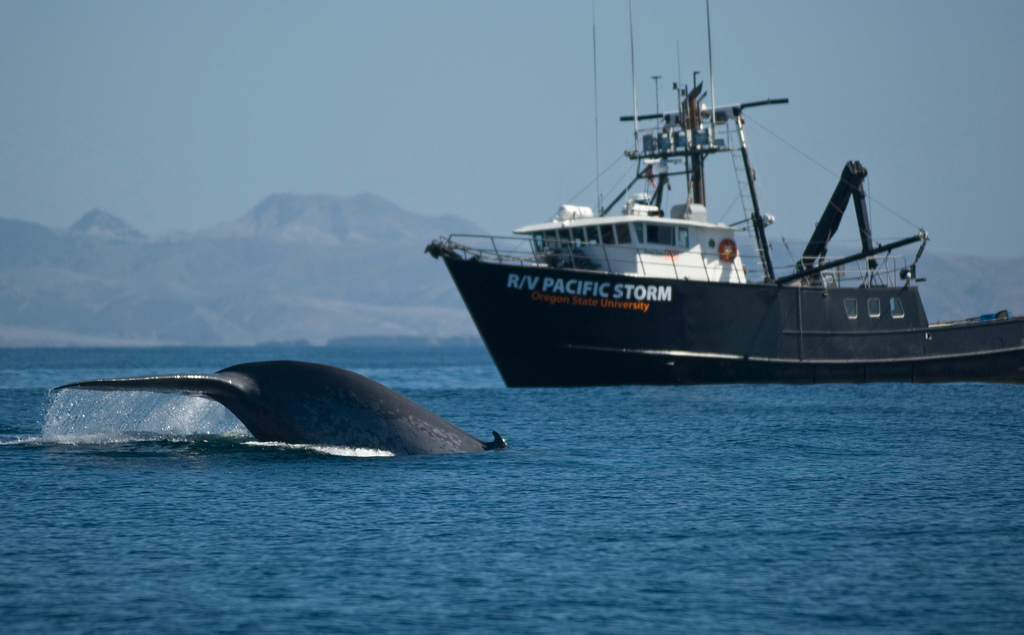Image: Craig Hayslip
A recent study has gone against the idea of blue whales as indiscriminate filter-feeders, showing that they only dive for food of a certain quality.
Blue whales, like all ‘baleen’ whales, feed by filling their mouth with seawater and pushing it back out with their tongue, sieving the food through hairy plates (baleen) on its way out.
They feed on prawn-like animals called krill, which live in large swarms. The whales often dive deep to feed on dense clouds of krill, but this requires a lot of energy and can cost more than is gained from the food.
Scientists from NOAA Fisheries, Stanford, and Oregon State looked at whales off the California coast, and found that they selectively forage only the dense, energy-rich patches of food.
When the density of krill individuals is less than 100-200 in one cubic metre (1000 litres) of water the whales tend to feed less intensively, resting for later dives.
However, when the krill exceeds the threshold they dive repeatedly and consume as much as possible.
Knowledge of a creature’s feeding habits is important for their conservation, as it allows a targeted response to specific locations or conditions.
Co-author Ari Friedlaender explains that: “If they are disturbed during the intense, deep-water feeding, it may not have consequences today, or this week, but it could over a period of months. There can be impacts on their overall health, as well as on their fitness and viability for reproduction.”
Blue whales nearly went extinct due to industrial whaling, and studies such as this are key to ensuring that these magnificent creatures have a future alongside humans.

